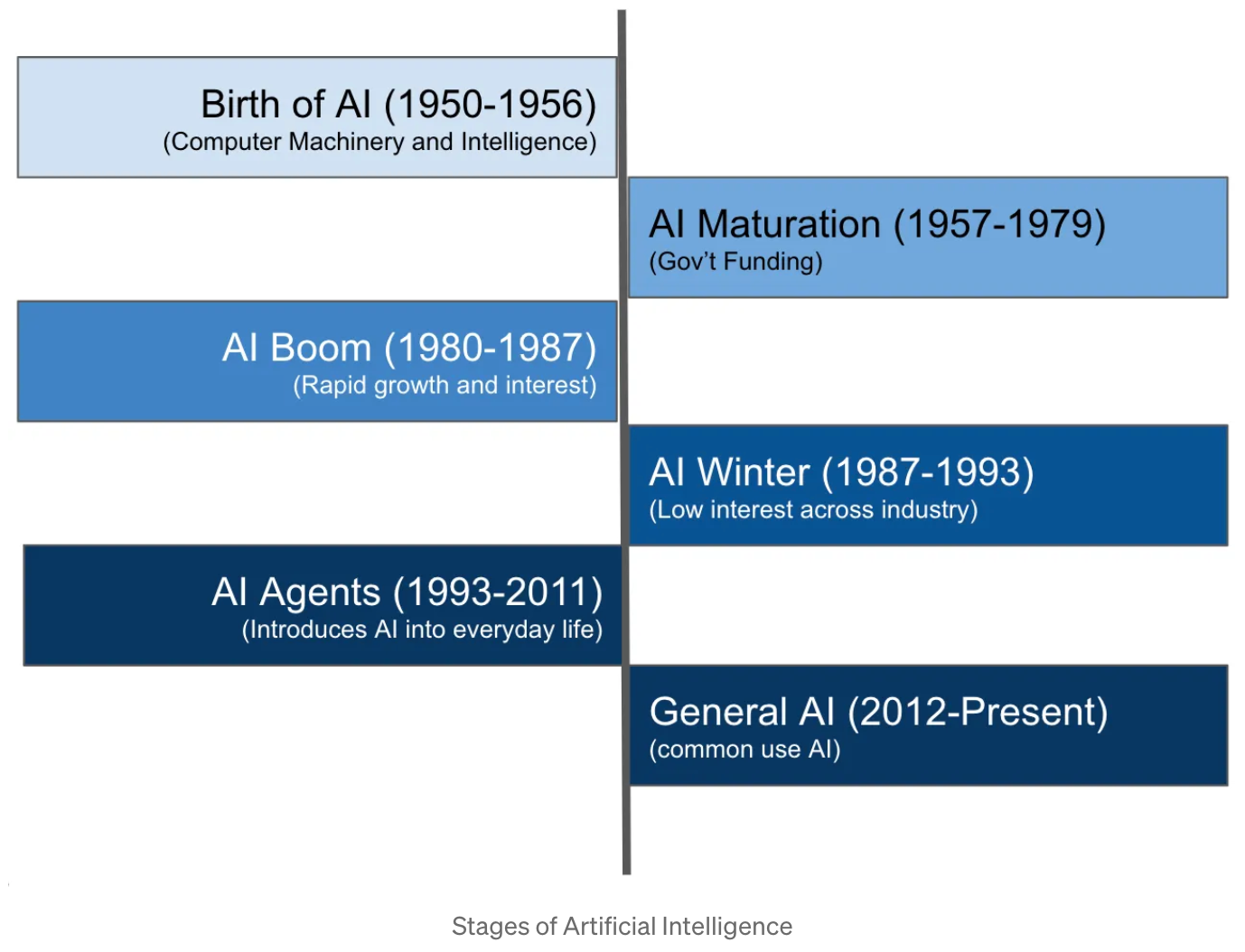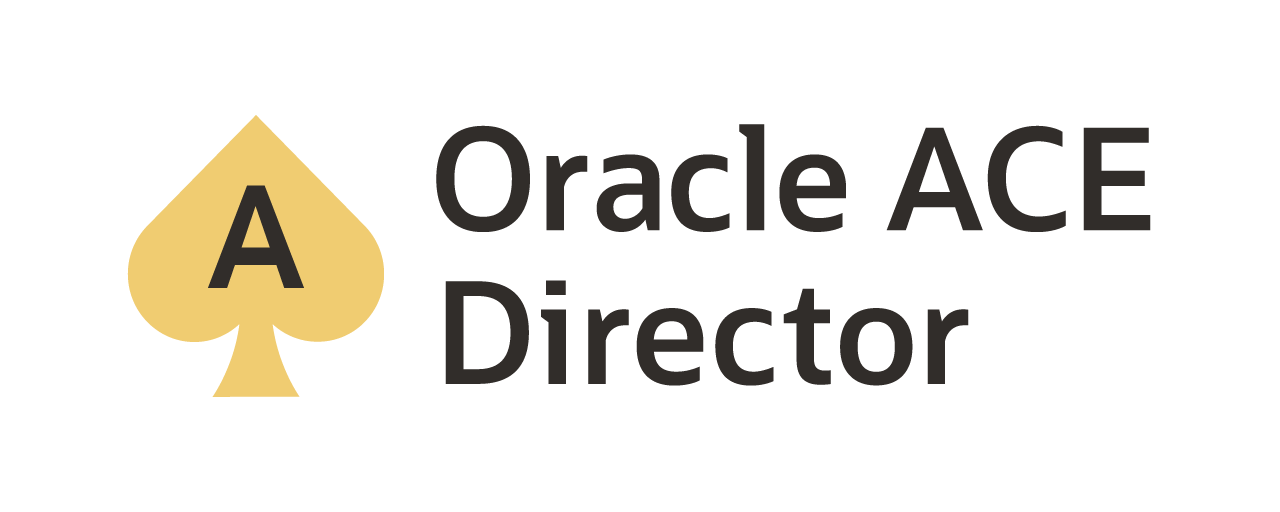
This post we are going to look at some items related to getting started with Generative AI. This is mostly related to how I got started looking at GenAI and what I presented this year at the Rocky Mountain Open User Group (RMOUG).
The presentation that I presented on provided details on what you should look forward and understand when talking about GenAI.
I broke this topic down into three distinct sections:
- Artificial Intelligence
- How you can get started
- Possibilities
Now, I cannot go into all the details of these section in this blog post, but there was a lot of good information handed out during this session.
Artificial Intelligence
Many people didn’t realize that the concept and terms related to Artificial Intelligence has been out since the Birth of AI (1950–1956). It has gone through many different stages to reach where it is now with General AI (2012-Present).
The image below shows a rough timeline on what these stages have been and were:

Over the last two years, AI has exploaded across every industry. Yet, many don’t see how and where AI is being used within their everyday spectrum. AI has be placed in every type of application you can think of.
- Microsoft has place in their productivity suite with the release of Copilot ($$/user/mo).
- Google has done the same thing with Gemini in Google Workspace (included in cost based on package).
- Oracle has embedded AI into its products, mostly applications, but leverage Cohere to do this.
- Apple was one of the first out with “siri” as a digital assistant, which many use today.
There are many different ways that AI is being used within our every day lives, yet so many do not realize it.

As you can see, AI is or can be built into any thing that is useful.
How do you get started?
There are four basic things needed in order to get started. During the presentation I talked about these four items in terms of personal growth. After all, that is what you need to move forward if you really want to understand AI.
These four things that you need in order to understand AI, at a deeper layers is:
- A desire to learn
- Reading a lot of documentation, I mean a lot.
- A set of tools
- Large Language Models (LLM)
A desire to learn
With AI being such a new thing to many, although it has been around for 75 years, getting a good understanding of what AI is and how it can be useful is key. This, in my opinion, can only be done if you have a desire to learn and be uncomfortable for a short period of time.
Many vendors out there, Microsoft, Google, and Oracle, are trying to make it easier for you. Yet at the same time, if you only know the top layer, you’ll never know how it truly works. You need to spend time digging deep into the topic.
Which brings you to the next bullet point:
Documentation
All of the AI providers provide a lot of documentation. So much that is is confusing when you first start digging into them. For Microsoft, you need to read the OpenAI docs. For Oracle, Cohere. For Goolge, Gemini.
I’ll let you in on a little secret thought, they are all pretty much the same. If you can learn one, you can learn all of them. Additionally, the concepts bleed over into the just about every GUI interface provided with vendors. The concept of “notebooks” which is referenced a lot if really just a development platform to introduce AI through python concepts.
Keep reading. Keep writing. The read some more.
Tools
When it comes to tools, there are a lot of tools on the market that you can use. The hyperscalers provide tools through their cloud platform interfaces. There are third party tools like pycharm or VSCode that are good for writing python code to interact with AIs.
Many of the AIs provide Application Programming Interfaces (APIs) that allow you to interact with the AI or tie external applications into the AI. These are very powerful approaches to making AI do some cool stuff.
Lastly, the ability to just talk to AI in “natural language” makes the concepts even more intergruging to use. Who doesn’t like just being able to ask a question and get an answer back?
Large Language Models (LLMs)
The last tool you should know about are Large Language Models (LLMs). Many hear the term but don’t quite understand it. LLMs are models that are trained on a per-determined set of data. Some models are smaller than others, while the larger ones are trained on millions if not billions of tokens.
What is a token? The term token has been explained in multiple ways. Some people think a token is a single “word” or “phrase” that is given and retured by the LLM. The best explination I’ve heard and made sense was by provided Google.
A “token” is a “character and a half”.
Is that actually correct? Not sure, but it makes sense when you start looking at the cost factor of running your queries against an LLM.
Concepts
With all the items listed in the previous section, there are concepts that have to be understood as well. These concepts are:
- Fine-Tuning
- Embedding
- Grounding
Understanding these concepts, you’ll be able to start development some LLMs that make sense for you to use and build from.
Fine-Tuning
This is the process of “teaching” the LLM what you want it to know. This is like a student learning a specialized task to make their job easier.
In order to tune an LLM, you would need to provide it a JSONL document that consists of a conversation like input, with questions and answers. Then the LLM can learn and you can ask it generalized questions around the topic it was trained on.
The JSONL document that you provided should follow the 80/20 rule. 80% of the questions are used to train the LLM while the last 20% of of the questions are reserved to validate the training.
Embedding
Embedding is another concept; however, it makes a lot of sense when you are building applications like Vector Searches. The embedding process uses a specialized LLM that will convert your unstructured data into a “vector” that is stored in a database. Then this information is used to retrieve data based on “semantic” search.
What does this mean? It means that your input is converted to a “vector” string and then compared to the “vector” stored in the database. All records returned, following a mathematical equation, are within a given range of the vector. This is known as the “top-K” approach.
Grounding
Grounding is the approach of providing relavant information to the LLM without training. It is an approach to elevate the halluination of the LLM when returning results. This approach is also known a “Retrieval Augmented Generation (RAG)”.
By grounding an LLM, you care ensuing the context of the results are what is needed for the question being asked. The also leads you into the concept of “specialized” LLMs. An LLM becomes specialized when you train the LLM for a specific task and then provide context with external data sources.
Agents
Agents are the next evolution of the AI ecosystem. Although the General AI approach has only been around for two years, agents came about very quickly.
Agents are autonomous entities that leverage AI to perfrom tasks. Some agents perform single tasks while some provide mulitiple tasks. At the same time, agents are goal-oriented and capable of making decisions on their own. Additionally, they can interact with other agents within their environments or outside their environments.
Some of the most common agents are chatbots, virtual assistants, or gaming characters.
AI Swarms
This is a new concept that has been around for about six-months. The concept of a “swarm” is the ability to have an agent manage multiple agents. This greats a “swarm” of agents that can be interacted with and provide services — enabling a “hive mind” approach between the agents.
Using AI swarms increase efficiency and effectivness through collabrative problem-solving. Yes, to be effective, it requires careful management of communication and coordination between agents.
Summary
In this post, I walked you through what I looked at when I was getting stared with GenAI. I provided highlights of all the concepts needed to build and use an AI/LLM. Lastly, I provided minor details on Agents and AI Swarms which are fairly new to the AI ecosystem and are forcing many to start looking at AI different.
Bobby Curtis

I’m Bobby Curtis and I’m just your normal average guy who has been working in the technology field for awhile (started when I was 18 with the US Army). The goal of this blog has changed a bit over the years. Initially, it was a general blog where I wrote thoughts down. Then it changed to focus on the Oracle Database, Oracle Enterprise Manager, and eventually Oracle GoldenGate.
If you want to follow me on a more timely manner, I can be followed on twitter at @dbasolved or on LinkedIn under “Bobby Curtis MBA”.
